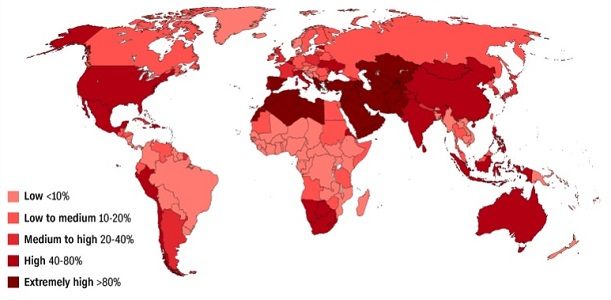Desert Nation For The Water Lesson: Water Crisis In India
Jun 30, 2019 • 54 views
India is the second most populated country in the world after China, soon to top the list, making the availability of non-renewable resources a primary concern, whereas it is supposed to be population and pollution control along with proper resource usage management with minimal wastage. The water stress that we are dealing now, haven`t been seen before at such a densely populated place in a country situated in tropical region, although this situation has been extrapolated by many with several warnings. With a long list of reasons, the insufficiency of fresh, potable water resources to meet the demands of growing population is caused by steeply rising mercury level, altered weather patterns, droughts or floods and most importantly ignoring warning signs. This resulted in 600 million people facing water crisis and thousands of Indians dying every day due to lack of access of safe drinking water.
Two major phenomena drive the water scarcity: rapidly growing freshwater use and depletion of usable freshwater resources. The illegal and over extraction of ground water, wastage of all the rain waters, increasing asphalt covers and lack of infrastructure to recharge the ground water through percolation are to be included in the long list of the factors for the same.
Countries to face water scarcity by 2040:

21 Indian cities are expected to run out of fresh water by the end of 2020 and this list includes national capital New Delhi and Bangalore as well, says a recent study from NITI Aayog.
Recently, Chennai came to the limelight because of the fact that it has run out of water. The four of its main lakes Sholavaram, Poondi, Chembarambakkam and Red hills; that are used to supply water to the southern capital of India has dried up. To be more specific, the water content is 1% of their volume as compared to just last year.
Will the country reach Day Zero soon?
The government's Jal Shakti Ministry is a hopeful sign. But we're not going to survive solely on hope. We should prioritize water harvesting and bring up strategies to replenish groundwater. The Northwestern states should grow crops that require less water and the east of India should be growing the crops focusing to revive rainfall. For ages water bodies like lakes, ponds, baolis and other such natural or man-made structures have played a vital role in supplying of water for drinking and various other needs. At the same time, these water bodies also play a vital role to recharge ground water and in case of over rain prevent urban flooding.
Laws must be mandated that approval of new apartments and buildings shall be done only when they have rain water harvesting plan included and all existing buildings are to be equipped with rain water harvesting system. At the political level, it is very crucial to enforce these laws properly as well as regular desilting of lakes. Just like electricity, usage of water needs be priced (with subsidy if necessary).
At the same time, we must inspirations from other desert countries. Inhabitants of African desert countries use techniques based on desert beetles to condense atmospheric moisture and use that water. Although there are projects carried out by Indian students (Kolkata), those must be taken under consideration. Another example is Israel. Israel has faced acute water shortage in the past, but today the picture is very different. It has the most advanced national water management system, which enables them to harness nearly98 percent of its annual rainfall.
We do have at most 5 years to work on the issue before it reaches a stage of no return. Although is a big challenge, but for the sake of our world, for the sake of our future generations, we must join hands to ensure to put an end to this.
